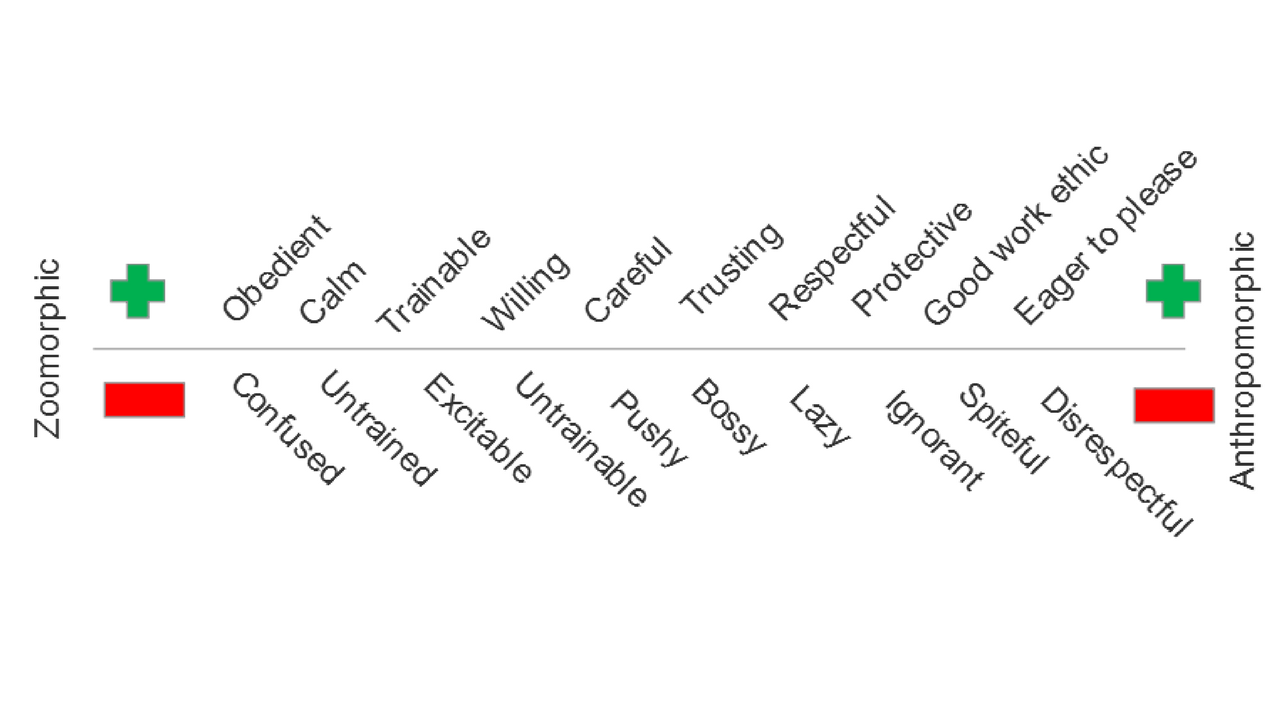
Anthropomorphism is when we ascribe human traits, ambitions, emotions or behaviours to animals. When it comes to horses, the problem with anthropomorphism is that it can lead to us making assumptions about the horse's intelligence, motives, temperament and much more.
Lloyd Morgan's canon (1903) reads:
"In no case is an animal activity to be interpreted
in terms of higher psychological processes
if it can be fairly interpreted in terms of processes
which stand lower in the scale of psychological evolution and development."
The reason it is dangerous is that if you look at the lower, negative, side of the diagram, you can see that some of these characteristics could easily lead to punishment. But what if the horse was confused and judged disrespectful? Coming from a belief that a horse is behaving spitefully, for example, is considerably more likely to result in punishment than a careful explanation of the lesson. The disrespectful horse is less likely to be treated gently than the untrained horse, wouldn't you say?
I think a further issue with these types of terms is that they are impossible to measure. How do you measure respect? You may say leading quietly next to me when I walk; I'd say the horse has learned to lead well. How do you judge a lazy horse? What about a horse with a good work ethic?
I'm not saying don't have empathy for your horse, you cannot train without that. I'm not saying don't love your horse, smother him in it, I do. All I think is that our language is important and that we shouldn't judge our horse by our human standards, expectations, interpretations and beliefs.
The continuum in the diagram is a work in progress - actually it is something I came up with a little while ago and I just popped the words up there in the best order I could come up with at the time. I think it's an important diagram and I'd love your input on it. Do you have a word or a phrase that you'd like to see on the diagram and where do you think it should go? Perhaps you don't agree with the order, great, let me have your ideas and we can work on it and make it better.
Let me know your thoughts in the comments, I look forward to incorporating them into the Kandoo Continuum (I should have put Kontinuum, no?).
If you'd like to read the International Society for Equitation Science position statement on Leadership and Dominance Concepts, click here.
If you'd like this series delivered directly to your inbox, click here.

